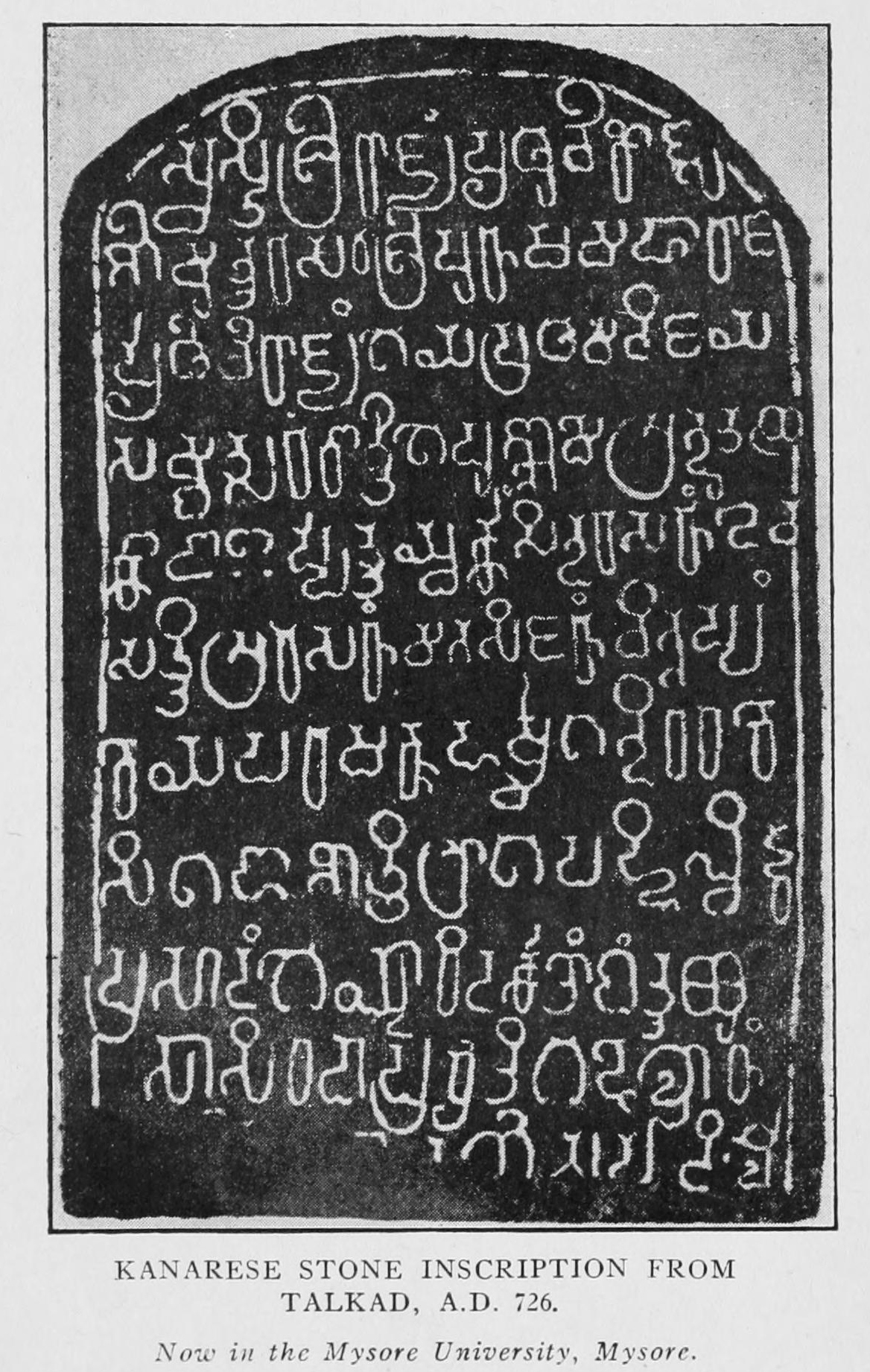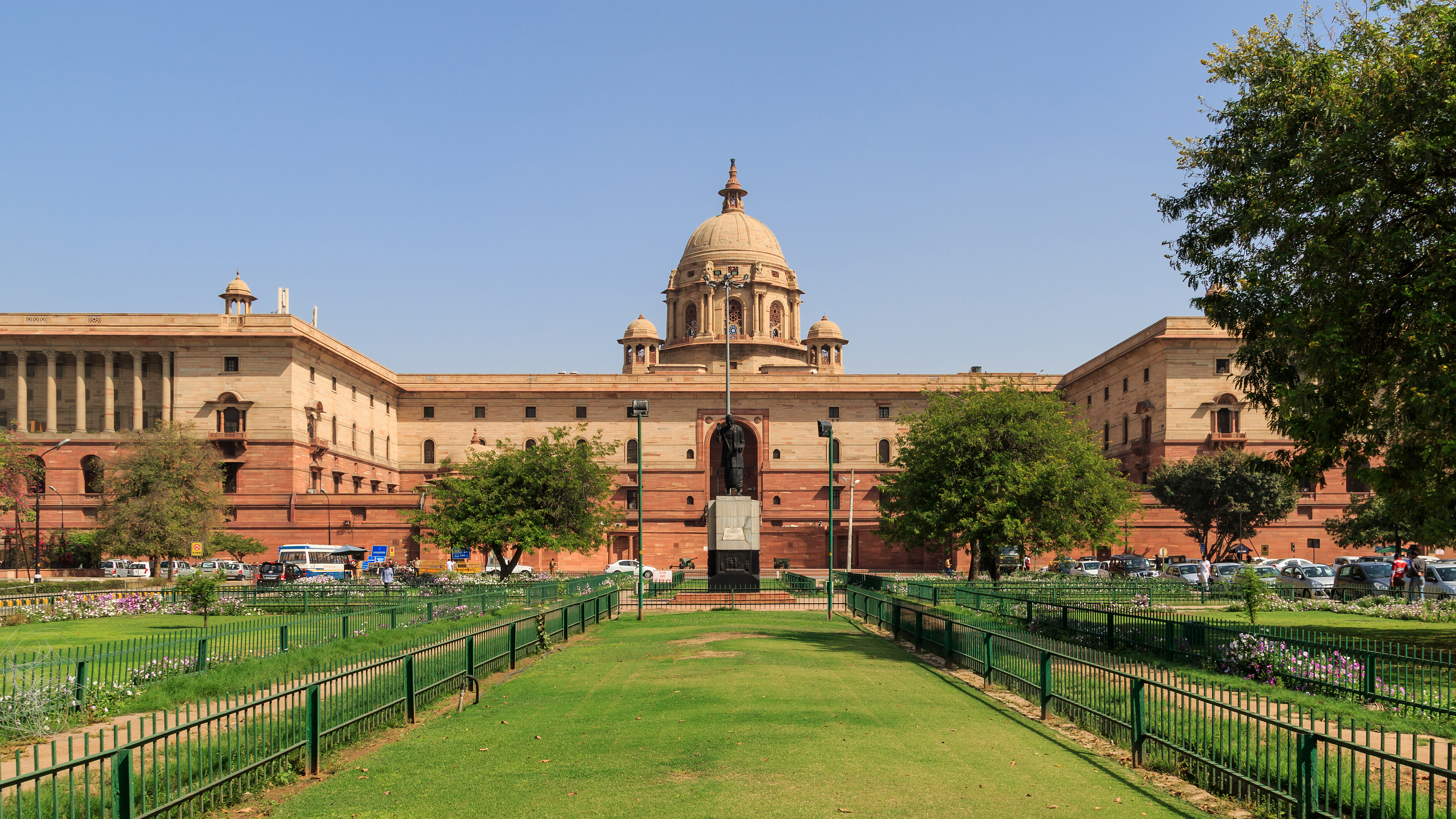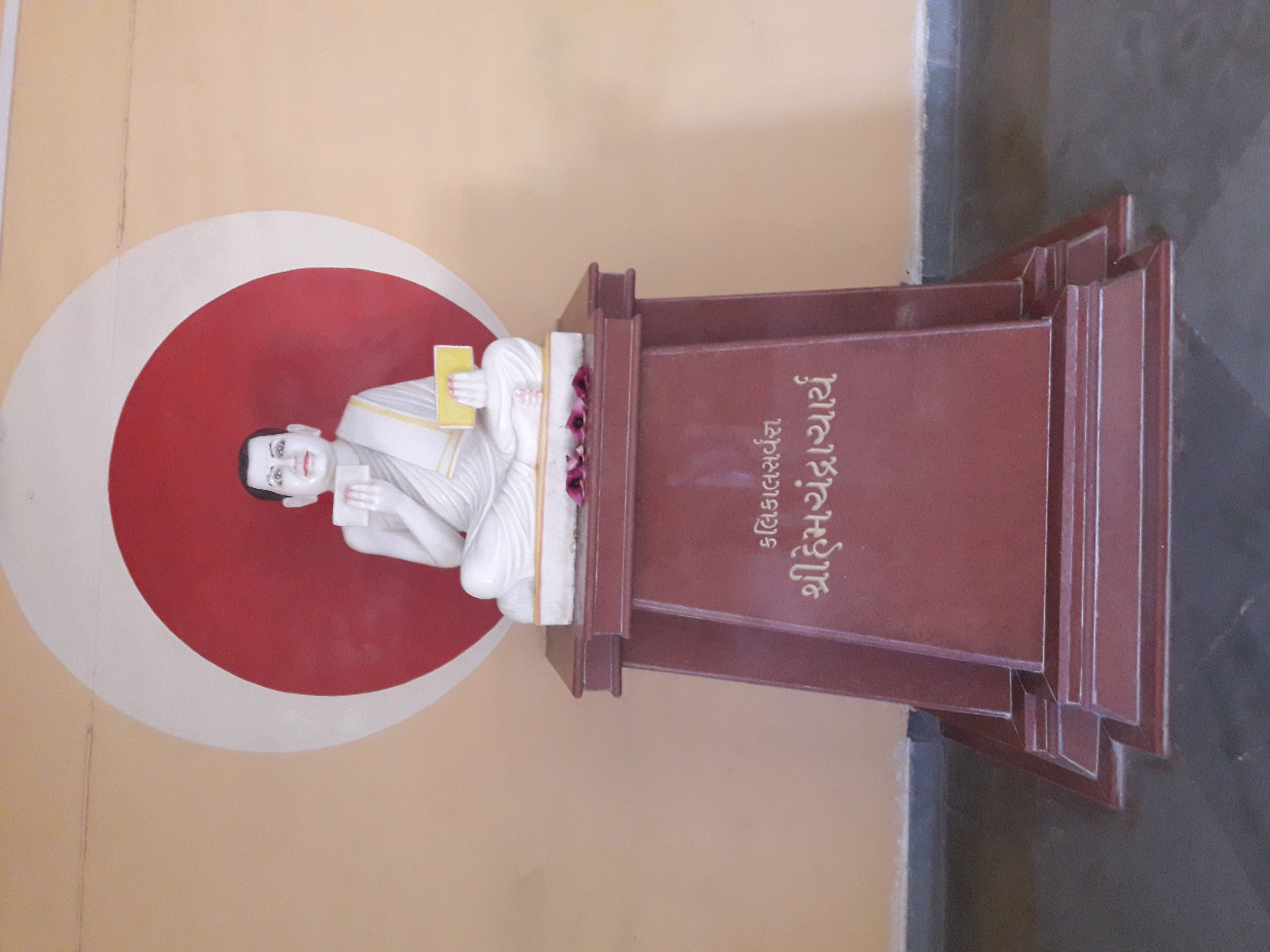|
Pūjyapāda
Acharya Pujyapada or Pūjyapāda (464–524 CE) was a renowned grammarian and ''acharya'' (philosopher monk) belonging to the Digambara tradition of Jains. It was believed that he was worshiped by demigods on the account of his vast scholarship and deep piety, and thus, he was named Pujyapada. He was said to be the guru of King Durvinita of the Western Ganga dynasty. Life Pujyapada is said to have lived from 510 CE to 600 CE. Born under the name Devanandi to parents Madhava Bhatta and Shridevi, he was a sadhu Digambara monk, as well as a yogi, mystic, poet, scholar, author and master of several branches of learning. As the Devs from heaven used to come to do Puja of his feet Paad, the title of Pujyapaad was given to him. He was heavily influenced by the writings of his predecessors like ''Acharya'' Kundakunda and ''Acharya'' Samantabhadra. He is rated as being the greatest of the early masters of Jain literature. He was prominent preceptor, with impeccable pontifical pedigre ... [...More Info...] [...Related Items...] OR: [Wikipedia] [Google] [Baidu] |
Tattvartha Sutra
''Tattvārthasūtra'', meaning "On the Nature [''artha''] of Reality [''tattva'']" (also known as ''Tattvarth-adhigama-sutra'' or ''Moksha-shastra'') is an ancient Jain text written by ''Acharya (Jainism), Acharya'' Umaswami in Sanskrit between the 2nd and 5th centuries CE. The ''Tattvārthasūtra'' is regarded as one of the earliest, most authoritative texts in Jainism. It is accepted as authoritative in both its major sub-traditions – ''Digambara'' and ''Śvētāmbara'' – as well as the minor sub-traditions. It is a philosophical text, and its importance in Jainism is comparable with that of the ''Brahma Sutras'' and ''Yoga Sutras of Patanjali'' in Hinduism. In an aphoristic sutra style of ancient Indian texts, it presents the complete Jainism philosophy in 350 sutras over 10 chapters. The text has attracted numerous commentaries, translations and interpretations since the 5th-century. One of its sutras, ''Parasparopagraho Jivanam'' is the motto of Jainism. Its meaning ... [...More Info...] [...Related Items...] OR: [Wikipedia] [Google] [Baidu] |
Jain Literature
Jain literature () refers to the literature of the Jain religion. It is a vast and ancient literary tradition, which was initially transmitted orally. The oldest surviving material is contained in the canonical ''Jain Agamas'', which are written in Ardhamagadhi, a Prakrit ( Middle-Indo Aryan) language. Various commentaries were written on these canonical texts by later Jain monks. Later works were also written in other languages, like Sanskrit and Maharashtri Prakrit. Jain literature is primarily divided between the canons of the ''Digambara'' and '' Śvētāmbara'' orders. These two main sects of Jainism do not always agree on which texts should be considered authoritative. More recent Jain literature has also been written in other languages, like Marathi, Tamil, Rajasthani, Dhundari, Marwari, Hindi, Gujarati, Kannada, Malayalam and more recently in English. Beliefs Jains believe their religion is eternal, and the teachings of the first tīrthaṅkara, Ṛṣa ... [...More Info...] [...Related Items...] OR: [Wikipedia] [Google] [Baidu] |
Western Ganga Dynasty
Western Ganga was an important ruling dynasty of ancient Karnataka in India which lasted from about 350 to 999 CE. They are known as "Western Gangas" to distinguish them from the Eastern Ganga Dynasty, Eastern Gangas who in later centuries ruled over Kalinga (historical region), Kalinga (modern Odisha and Northern Andhra Pradesh). The general belief is that the Western Gangas began their rule during a time when multiple native clans asserted their freedom due to the weakening of the Pallava empire in South India, a geo-political event sometimes attributed to the southern conquests of Samudra Gupta. The Western Ganga sovereignty lasted from about 350 to 550 CE, initially ruling from Kolar, Karnataka, Kolar and later, moving their capital to Talakadu on the banks of the Kaveri River in modern Mysore district. After the rise of the imperial Chalukya dynasty, Chalukyas of Badami, the Gangas accepted Chalukya overlordship and fought for the cause of their overlords against the Pal ... [...More Info...] [...Related Items...] OR: [Wikipedia] [Google] [Baidu] |
Acharya
In Indian religions and society, an ''acharya'' (Sanskrit: आचार्य, IAST: ; Pali: ''ācariya'') is a religious teacher in Hinduism and Buddhism and a spiritual guide to Hindus and Buddhists. The designation has different meanings in Hinduism, Buddhism and secular contexts. ''Acharya'' is sometimes used to address an expert teacher or a scholar in any discipline, e.g.: Bhaskaracharya, the expert mathematician. Etymology The Sanskrit phrase ''ācāraṁ grahāyati ācāraṁ dadāti iti vā'' means ''Acharya'' (or teacher) is the one who teaches good conduct to one's students. A female teacher is called an ''achāryā,'' and a male teacher's wife is called an ''achāryāni'' In Hinduism The term '''Acharya''' has numerous definitions. Hinduism frequently uses the terms "''acharya''" and "''guru''" interchangeably. According to the Dharmaśāstra, Dharma Shastras, ''acharya'' is the one who imparts knowledge of the entire Vedas, Veda to a student and performs upan ... [...More Info...] [...Related Items...] OR: [Wikipedia] [Google] [Baidu] |
Dāna
(Devanagari: , IAST: ) is a Sanskrit and Pali word that connotes the virtue of generosity, charity or giving of alms, in Indian religions and philosophies. In Hinduism, Buddhism, Jainism, and Sikhism, is the practice of cultivating generosity. It can take the form of giving to an individual in distress or need, or of philanthropic public projects that empower and help many. is an ancient practice in Indian traditions, tracing back to Vedic traditions. Hinduism (Sanskrit: ) means giving, often in the context of donation and charity. In other contexts, such as rituals, it can simply refer to the act of giving something. is related to and mentioned in ancient texts along with concepts of () which means benevolent deed, helping others; () which means fee one can afford; and (), which means alms. is defined in traditional texts as any action of relinquishing the ownership of what one considered or identified as one's own, and investing the same in a recipient without ex ... [...More Info...] [...Related Items...] OR: [Wikipedia] [Google] [Baidu] |
New Delhi
New Delhi (; ) is the Capital city, capital of India and a part of the Delhi, National Capital Territory of Delhi (NCT). New Delhi is the seat of all three branches of the Government of India, hosting the Rashtrapati Bhavan, New Parliament House, New Delhi, Sansad Bhavan, and the Supreme Court of India, Supreme Court. New Delhi is a Municipal governance in India, municipality within the NCT, administered by the New Delhi Municipal Council (NDMC), which covers mostly Lutyens' Delhi and a few adjacent areas. The municipal area is part of a larger List of districts in India, administrative district, the New Delhi district. Although colloquially ''Delhi'' and ''New Delhi'' are used interchangeably to refer to the National Capital Territory of Delhi, both are distinct entities, with the municipality and the New Delhi district forming a relatively small part within the megacity of Delhi. The National Capital Region (India), National Capital Region is an even larger entity, compris ... [...More Info...] [...Related Items...] OR: [Wikipedia] [Google] [Baidu] |
Pearson Education
Pearson Education, known since 2011 as simply Pearson, is the educational publishing and services subsidiary of the international corporation Pearson plc. The subsidiary was formed in 1998, when Pearson plc acquired Simon & Schuster's educational business and combined it with Pearson's existing education company Addison-Wesley Longman. Pearson Education was restyled as simply Pearson in 2011. In 2016, the diversified parent corporation Pearson plc rebranded to focus entirely on education publishing and services; further, as of 2023, Pearson Education is Pearson plc's main subsidiary. In 2019, Pearson Education began phasing out the prominence of its hard-copy textbooks in favor of digital textbooks, which cost the company far less, and can be updated frequently and easily. As of 2023, Pearson Education has testing/teaching centers in over 55 countries worldwide; the UK and the U.S. have the most centers. The headquarters of parent company Pearson plc are in London, England. P ... [...More Info...] [...Related Items...] OR: [Wikipedia] [Google] [Baidu] |
Motilal Banarsidass
Motilal Banarsidass Publishing House (MLBD) is an Indian academic publishing house, founded in Delhi, India in 1903. It publishes and distributes serials, monographs, and scholarly publications on Asian religions, Buddhology, Indology, Eastern philosophy, history, culture, arts, architecture, archaeology, language, literature, linguistics, musicology, mysticism, yoga, tantra, occult, medicine, astronomy, and astrology. Amongst its publications are the 100 volumes of the Mahapuranas; the 50 volumes of the '' Sacred Books of the East'', edited by Max Müller; ''Bibliotheca Buddhica'' (30 volumes in 32 pts); Ramcharitmanas with Hindi and English translations; the Manusmriti in 10 volumes and the Sanskrit lexicon; and the 7 volumes of ''Encyclopedia of Indian Philosophies''. It also brings out books based on research and study conducted at organizations such as the Indian Council of Historical Research (ICHR), Indira Gandhi National Centre for the Arts (IGNCA), and Indian Cou ... [...More Info...] [...Related Items...] OR: [Wikipedia] [Google] [Baidu] |
Hiravijaya
Hiravijaya (1526–1595), also known as Muni Hiravijayji and Hiravijay Suri, was a high priest of the Tapa Gaccha monastic order, following the Jain Śvetāmbara tradition. He is known for propounding the Jain philosophy to Mughal Emperor Akbar and turning him towards vegetarianism. Early life and monkhood Hiravijaya was born in a Jain Oswal family in Palanpur in Gujarat in 1527.Roy, A. K. (1984) p. 140 His parents had died when he was still an infant, and he was brought up by his two elder sisters. He became the disciple of a Jain monk, Vijayadana Suri in 1540 at the age of 13, and a new name Hira Harsh was given to him. He was taken to Devagiri – a center of Sanskrit learning in those days, for further education. He successively won the title of ''Pandit'' in 1550, ''Upadhyaya'' in 1552 and ''Suri'' in 1553. This last title he won at Sirohi and became an Acharya. Hence-forth he was known as Acharya Hiravijayasuri. In 1556 when his guru died, the Śvetāmbara Tapa Gacch ... [...More Info...] [...Related Items...] OR: [Wikipedia] [Google] [Baidu] |
Hemachandra
Hemacandra was a 12th century () Śvetāmbara Jaina acharya, ācārya, scholar, poet, mathematician, philosopher, yogi, wikt:grammarian, grammarian, Law, law theorist, historian, Lexicography, lexicographer, rhetorician, logician, and Prosody (linguistics), prosodist. Noted as a prodigy by his contemporaries, he gained the title ''kalikālasarvajña'', "the knower of all knowledge in his times" and is also regarded as father of the Gujarati language. Born as Caṅgadeva, he was ordained in the Śvētāmbara, Śvetāmbara school of Jainism in 1110 and took the name Somacandra. In 1125 he became an adviser to King Kumārapāla and wrote ''Arhannīti'', a work on politics from Jaina perspective. He also produced ''Triśaṣṭi-śalākā-puruṣacarita'' (“Deeds of the 63 Illustrious Men”), a Sanskrit epic poem on the history of important figures of Jainism. Later when he was consecrated as ācārya, his name was changed to Hemacandra. Early life Hemacandra was born in Dhand ... [...More Info...] [...Related Items...] OR: [Wikipedia] [Google] [Baidu] |
Devardhigani Kshamashraman
Devardhi or Vachanacharya Devardhigani Kshamashramana or Devavachaka was a Jain ascetic of the Śvetāmbara sect and an author of several Prakrit texts. He was a prominent figure in Jainism in the ''5th century AD''. Mainly known for his contributions to the compilation and preservation of the canonical Jain literature, Jain scriptures, he is one of the most revered ascetics of the Śvetāmbara sect of Jainism. It was under his guidance that the second council of Vallabhi was held to preserve the remaining canonical texts of Jainism. Apart from the compilation of the canonical texts, he has been revered for his spiritual teachings as well. Early life Devardhigani was born in the Kshatriya caste of the Kashyap (caste), Kashyap gotra (family lineage). According to a legend, Mahavira had told ''Saudharmendra (demi-god in Jainism)'' in a holy assembly in Rajgruhi city,"Harinaigmeshin transferred me during my state of embryo from the womb of Devananda to the womb of Trishala and a ... [...More Info...] [...Related Items...] OR: [Wikipedia] [Google] [Baidu] |
Pāṇini
(; , ) was a Sanskrit grammarian, logician, philologist, and revered scholar in ancient India during the mid-1st millennium BCE, dated variously by most scholars between the 6th–5th and 4th century BCE. The historical facts of his life are unknown, except only what can be inferred from his works, and legends recorded long after. His most notable work, the ''Aṣṭādhyāyī,'' is conventionally taken to mark the start of Classical Sanskrit. His work formally codified Classical Sanskrit as a refined and standardized language, making use of a technical metalanguage consisting of a syntax, morphology, and lexicon, organised according to a series of meta-rules. Since the exposure of European scholars to his ''Aṣṭādhyāyī'' in the nineteenth century, Pāṇini has been considered the "first Descriptive linguistics, descriptive linguist",#FPencyclo, François & Ponsonnet (2013: 184). and even labelled as "the father of linguistics". His approach to grammar influenced such ... [...More Info...] [...Related Items...] OR: [Wikipedia] [Google] [Baidu] |









